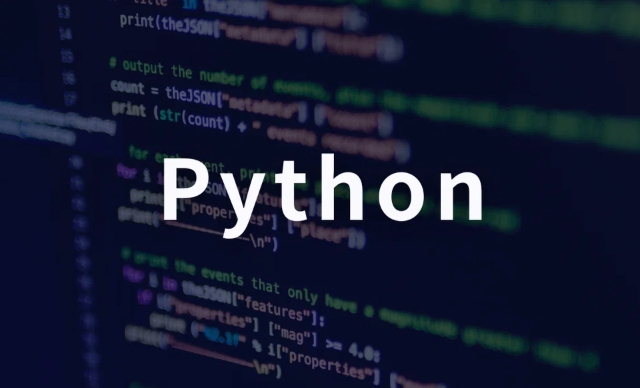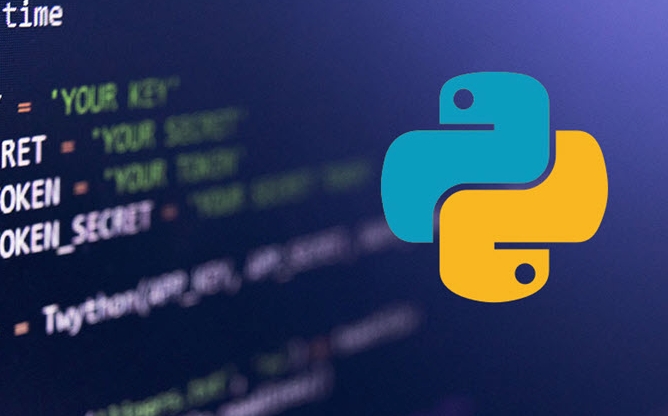The answer is to use matplotlib.pyplot to easily draw line charts and basic beautification. 1. Use plt.plot() to draw lines, supporting setting parameters such as color, linestyle, marker, etc.; 2. Add title and axis labels through plt.title(), plt.xlabel(), and plt.ylabel(); 3. Use plt.legend() to display legends, and define labels in plot; 4. Call plt.grid(True) to add grids to improve readability; 5. Finally, use plt.show() to display the image, or use plt.savefig() to save the image. Proficient in these steps, you can complete the basic drawing tasks.

Drawing is a very common requirement in data analysis and visualization, and Python's matplotlib is one of the most basic and commonly used drawing libraries. Below is a typical matplotlib.pyplot drawing example, showing how to draw a simple line chart and add common elements such as title, axis labels, legends, etc.

? Basic line chart example
import matplotlib.pyplot as plt # Sample data x = [1, 2, 3, 4, 5] y = [2, 4, 6, 8, 10] # Draw a line chart plt.plot(x, y, label='y = 2x', color='blue', marker='o') # Add title and axis label plt.title('Simple Line Plot') plt.xlabel('X axis') plt.ylabel('Y axis') # Show legend plt.legend() # Show grid (optional) plt.grid(True) # Show the graphics plt.show()
? Key points description
-
plt.plot(): Draw a line chart, supporting setting line colors, styles, marking points, etc. -
label: used for legend annotation, used withplt.legend(). -
marker='o': Add circle marks to the data points for easy observation. -
plt.grid(True): add grid to improve readability. -
plt.show(): Must be called in the script to display the image (sometimes omitted in Jupyter).
?? Extension: Draw multiple lines (comparison image)
import matplotlib.pyplot as plt x = [1, 2, 3, 4, 5] y1 = [1, 4, 9, 16, 25] # y = x^2 y2 = [2, 4, 6, 8, 10] # y = 2x plt.plot(x, y1, label='y = x2', color='red', linestyle='-', marker='s') plt.plot(x, y2, label='y = 2x', color='blue', linestyle='--', marker='o') plt.title('Multiple Lines Plot') plt.xlabel('X axis') plt.ylabel('Y axis') plt.legend() plt.grid(True) plt.show()
? Tips
In Jupyter Notebook , adding
%matplotlib inlinecan make the image appear inline:%matplotlib inline
Support saving images:

plt.savefig('my_plot.png', dpi=300, bbox_inches='tight')
-
Common parameters:
-
color: color ('red', 'green', '#FF5733') -
linestyle: Line style ('-' solid line, '--' dotted line, ':' dotted line) -
marker: marking points ('o' circle, 's' square, '^' triangle, etc.)
-
Basically all that, not complicated but very practical. Proficient in plt.plot() and commonly used decorative functions, you can meet most basic drawing needs.

The above is the detailed content of python matplotlib plot example. For more information, please follow other related articles on the PHP Chinese website!

Hot AI Tools

Undress AI Tool
Undress images for free

Undresser.AI Undress
AI-powered app for creating realistic nude photos

AI Clothes Remover
Online AI tool for removing clothes from photos.

Clothoff.io
AI clothes remover

Video Face Swap
Swap faces in any video effortlessly with our completely free AI face swap tool!

Hot Article

Hot Tools

Notepad++7.3.1
Easy-to-use and free code editor

SublimeText3 Chinese version
Chinese version, very easy to use

Zend Studio 13.0.1
Powerful PHP integrated development environment

Dreamweaver CS6
Visual web development tools

SublimeText3 Mac version
God-level code editing software (SublimeText3)

Hot Topics
 VSCode settings.json location
Aug 01, 2025 am 06:12 AM
VSCode settings.json location
Aug 01, 2025 am 06:12 AM
The settings.json file is located in the user-level or workspace-level path and is used to customize VSCode settings. 1. User-level path: Windows is C:\Users\\AppData\Roaming\Code\User\settings.json, macOS is /Users//Library/ApplicationSupport/Code/User/settings.json, Linux is /home//.config/Code/User/settings.json; 2. Workspace-level path: .vscode/settings in the project root directory
 How to handle transactions in Java with JDBC?
Aug 02, 2025 pm 12:29 PM
How to handle transactions in Java with JDBC?
Aug 02, 2025 pm 12:29 PM
To correctly handle JDBC transactions, you must first turn off the automatic commit mode, then perform multiple operations, and finally commit or rollback according to the results; 1. Call conn.setAutoCommit(false) to start the transaction; 2. Execute multiple SQL operations, such as INSERT and UPDATE; 3. Call conn.commit() if all operations are successful, and call conn.rollback() if an exception occurs to ensure data consistency; at the same time, try-with-resources should be used to manage resources, properly handle exceptions and close connections to avoid connection leakage; in addition, it is recommended to use connection pools and set save points to achieve partial rollback, and keep transactions as short as possible to improve performance.
 python itertools combinations example
Jul 31, 2025 am 09:53 AM
python itertools combinations example
Jul 31, 2025 am 09:53 AM
itertools.combinations is used to generate all non-repetitive combinations (order irrelevant) that selects a specified number of elements from the iterable object. Its usage includes: 1. Select 2 element combinations from the list, such as ('A','B'), ('A','C'), etc., to avoid repeated order; 2. Take 3 character combinations of strings, such as "abc" and "abd", which are suitable for subsequence generation; 3. Find the combinations where the sum of two numbers is equal to the target value, such as 1 5=6, simplify the double loop logic; the difference between combinations and arrangement lies in whether the order is important, combinations regard AB and BA as the same, while permutations are regarded as different;
 Mastering Dependency Injection in Java with Spring and Guice
Aug 01, 2025 am 05:53 AM
Mastering Dependency Injection in Java with Spring and Guice
Aug 01, 2025 am 05:53 AM
DependencyInjection(DI)isadesignpatternwhereobjectsreceivedependenciesexternally,promotingloosecouplingandeasiertestingthroughconstructor,setter,orfieldinjection.2.SpringFrameworkusesannotationslike@Component,@Service,and@AutowiredwithJava-basedconfi
 python pytest fixture example
Jul 31, 2025 am 09:35 AM
python pytest fixture example
Jul 31, 2025 am 09:35 AM
fixture is a function used to provide preset environment or data for tests. 1. Use the @pytest.fixture decorator to define fixture; 2. Inject fixture in parameter form in the test function; 3. Execute setup before yield, and then teardown; 4. Control scope through scope parameters, such as function, module, etc.; 5. Place the shared fixture in conftest.py to achieve cross-file sharing, thereby improving the maintainability and reusability of tests.
 Python for Data Engineering ETL
Aug 02, 2025 am 08:48 AM
Python for Data Engineering ETL
Aug 02, 2025 am 08:48 AM
Python is an efficient tool to implement ETL processes. 1. Data extraction: Data can be extracted from databases, APIs, files and other sources through pandas, sqlalchemy, requests and other libraries; 2. Data conversion: Use pandas for cleaning, type conversion, association, aggregation and other operations to ensure data quality and optimize performance; 3. Data loading: Use pandas' to_sql method or cloud platform SDK to write data to the target system, pay attention to writing methods and batch processing; 4. Tool recommendations: Airflow, Dagster, Prefect are used for process scheduling and management, combining log alarms and virtual environments to improve stability and maintainability.
 Understanding the Java Virtual Machine (JVM) Internals
Aug 01, 2025 am 06:31 AM
Understanding the Java Virtual Machine (JVM) Internals
Aug 01, 2025 am 06:31 AM
TheJVMenablesJava’s"writeonce,runanywhere"capabilitybyexecutingbytecodethroughfourmaincomponents:1.TheClassLoaderSubsystemloads,links,andinitializes.classfilesusingbootstrap,extension,andapplicationclassloaders,ensuringsecureandlazyclassloa
 How to work with Calendar in Java?
Aug 02, 2025 am 02:38 AM
How to work with Calendar in Java?
Aug 02, 2025 am 02:38 AM
Use classes in the java.time package to replace the old Date and Calendar classes; 2. Get the current date and time through LocalDate, LocalDateTime and LocalTime; 3. Create a specific date and time using the of() method; 4. Use the plus/minus method to immutably increase and decrease the time; 5. Use ZonedDateTime and ZoneId to process the time zone; 6. Format and parse date strings through DateTimeFormatter; 7. Use Instant to be compatible with the old date types when necessary; date processing in modern Java should give priority to using java.timeAPI, which provides clear, immutable and linear







